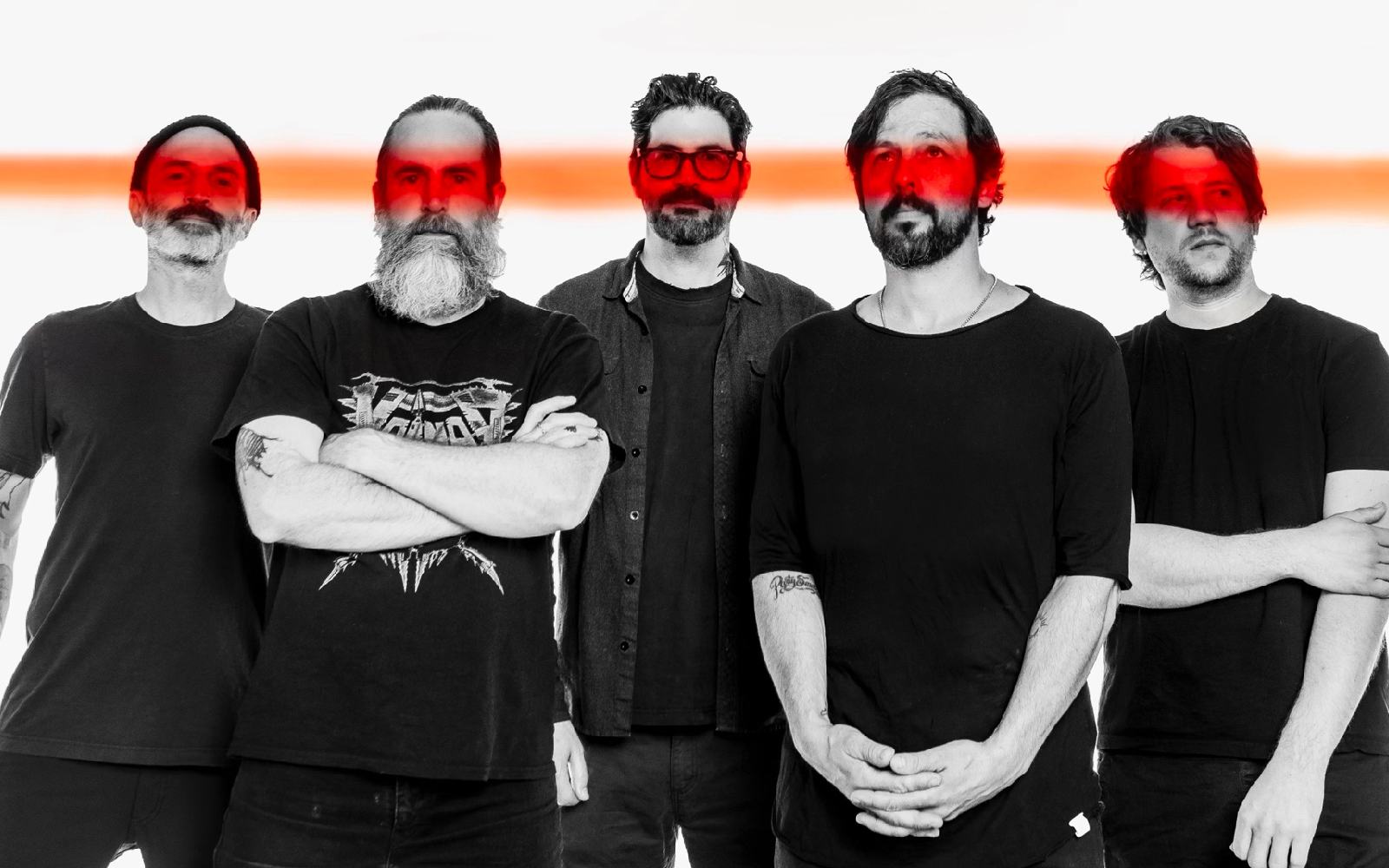1999 saw the release of the genre-defying and generation defining record Calculating Infinity. 2025 sees Dillinger back in Australia to celebrate it.
The Dillinger Escape Plan are known as one of the most ferocious live bands on the planet, having built a reputation for their shows having people, including bandmembers, literally swinging from the rafters, the frantic energy of their music matched so perfectly with this visual element.
Their 1999 album Calculating Infinity was a turning point for the band, the band currently touring to celebrate 25 years of the iconic record. August sees them arriving in Australia, with shows across Perth, Adelaide, Melbourne, Sydney and Brisbane— a far cry from the tiny clubs and venues that the band was playing in the 90s. Times have changed and so has the gear they’re using, technology having almost come full circle for guitarist Ben Weinman.
Dillinger Escape Plan Australia
“It’s interesting because Calculating Infinity was recorded all to tape.” begins Ben. “And it was done fairly quickly, we ended up doing a couple extra tracks using ADAT,” he explains, harkening us back to the beginning of digital recording.
Read all the latest features, lists and columns here.
“And now we’re live on stage, we’re actually using (Neural DSP) Quad Cortex, and I hadn’t really been a fan of digital modelling.”
“The fact that it has so many outputs makes it much more flexible. That’s really useful in the live context; our shows are very visceral, we’re often knocking over microphones miking up speakers and to avoid any possibility of those kind of things and affecting front of house is always a benefit.”
“Calculating Infinity, we used a lot of different amps and a lot of different sounds, we even used completely direct sounds as main tones, without any amplifiers.”
The routing of the Quad Cortex allows Ben and Dillinger to dial in tones closer to the record than they’ve ever achieved, including direct sounds. They can focus on the performance and not the mix or the stage.
“The way we recorded Calculating Infinity really lends itself to the live show. So gear wise the Quad Cortex is, while very digital, having all the options so that we can just perform lends itself well to doing this kind of music as well.”
Dillinger have had quite the career since the 1999 record, Ben himself having performed as part of Suicidal Tendencies, so surely it must be odd going back to perform something in its entirety from such an early stage of his career?
“In preparing for these shows,” Ben begins. “For one, it made me enjoy playing guitar again, like when I practice I was like ‘Man, my hands don’t do this anymore! I don’t really understand this anymore—I gotta learn it again.’ and in being forced to have to get in shape, I started to see progression.”
“Like when you’re young and you start playing guitar and it’s like a video game, like ‘I just wanna get home and play!’”
Ben continues, explaining that he felt himself levelling up and hitting new heights, but he also acknowledges that a few of the songs have been performed extensively throughout the career of the band.
“So they were pretty immersed in the band, not all of them but some of them.” he explains. “It is interesting to limit ourselves to old stuff and not play any newer stuff. The older stuff isn’t odd to play, but it’s odd to play only the older stuff, and bringing ourselves back to that time period.”
Ben explores this further, discussing the memories of jumping into vans, playing small halls and clubs, as well as generally being outsiders within a music scene; Dillinger Escape Plan have carved a niche for themselves and others now, but it wasn’t always that way.
We shift here to the recording of Calculating Infinity itself. Performing as a band with a diverse and unique sound is hard enough, and this can sometimes be exacerbated by an engineer who doesn’t understand a band’s intention and instead tries to fit them into a box.
Steve Evetts
“We were very lucky to find a producer, we worked with Steve Evetts, who really thought like us, a very musical guy.” explains Ben. “The bands we thought sounded the best in the underground hardcore scene— and it was very clear ‘cause there was these bands that sounded like they recorded on a four-track recorder, and then there was the band that to us, sound ‘real’, and it sounds like a polished real recording, but it’s an underground band.”
The person making these records was Steve Evetts who, in addition to Dillinger, has worked with the likes of Poison the Well, Sepultura, Saves the Day, Lifetime, Hightower, Story of the Year, Every Time I Die, Earth Crisis and more.
“We went to him ‘cause he was doing the albums that we loved the sound of. The benefit of that was not that he didn’t understand what we were doing, it was that he could easily tell when we needed to be pushed farther, because we were sounding like the other stuff he did.”
“He was like ‘I hear where you got this from, I did the band.’” says Ben with a grin. “‘C’mon, let’s push this!’”
Steve Evetts pushed the band to find their own sonic identity, pulling influence from their own world as well as Steve’s impressive discography.
“He got us out of that obvious influence.”
As main songwriter, Ben’s influences were on show, but Steve Evetts helped to shape and refine their sonic footprint into something that would change the trajectory of their careers and the lives of themselves as well as the audience who found a home in their fanbase; and that’s worth celebrating.
The Dillinger Escape Plan land in Australia in August to celebrate 25 years of Calculating Infinity. For more info, ticketing and dates, keep reading at The Phoenix.

